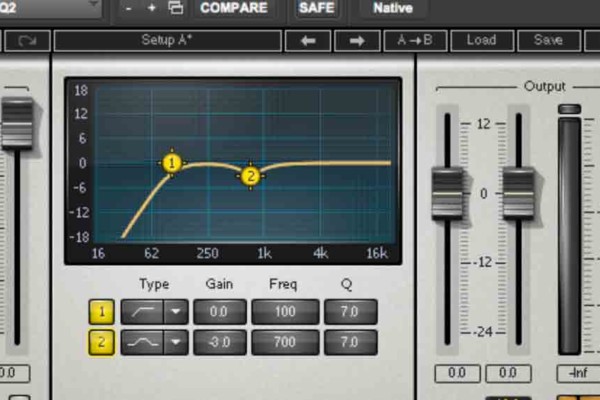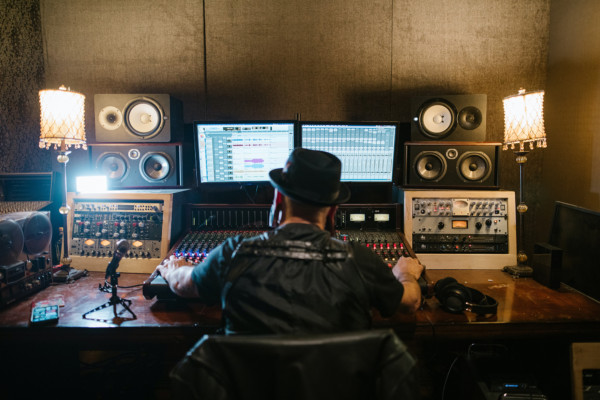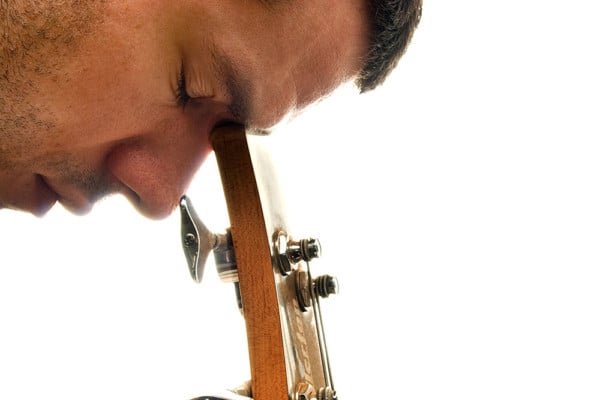In the Studio: Part 2 – Setting the Stage for a Good Performance

Last time we focused on the importance of being prepared before we enter the studio with our projects. Today, let’s talk about setting the stage for a good performance after we walk into the studio.
Communication
Communication between musicians is an important aspect in obtaining a quality performance, and thereby a more exciting and pleasing recording. We can mostly divide communication into two facets: Visual communication and Aural communication.
Visual Communication
Sometimes musicians who perform in a group fail to realize the importance of the visual communication that takes place between performers. As performers, we often take visual cues from one another, sometimes without even realizing we are doing so. Having, or not having, full visual communication between musicians can sometimes mean the difference between a performance that barely hangs on and one that locks in solid.
Besides all that that, most of us who are sighted (i.e. not visually impaired) are used to performing live where we can see each other and a lack of visual communication can make us unsteady and weaken the performance. This is particularly true for bassists and drummers, who, most often, work as a unit. To obtain the best performance, the studio should be as comfortable for the musicians as is feasible, which generally means some degree of visual communication between performers.
With larger groups individual musicians may be isolated visually from each other while a conductor holds them together. This is fine if this is usual for the group. However, for smaller groups I suggest having adequate visual contact between all the members. Sometimes it may be a setup challenge, but in any decent studio it can usually be arranged with minimal impact (or none) on audio quality. A drum room with a window, half baffles (i.e. waist high or so) for the instruments, baffles with windows, placing amps in isolation booths while keeping musicians in the same room etc., are all strategies which can be employed to ensure both good audio quality and a fine performance from the musicians.
Even in particularly poor studio situations, it can generally be made so that at least a few musicians can visually communicate, which is preferable to a completely blindfolded set of musicians. At the very least I posit that the bassist and drummer should have some visual communication.
In some circumstances, there will be negotiation between the engineers and the musicians. The conflict is often between allowing the musicians to communicate well, and thereby feel more comfortable and more easily perform well, and ensuring mic separation and good quality audio and ease of editing. Even in situations where visual contact between musicians might interfere with channel separation, I generally find it preferable to have some small amount of “bleed” between mics., especially if it means obtaining a higher performance level from musicians. However, every situation must be decided individually.
The bottom line here is that great audio quality and mic/track separation cannot make up for a poor performance, but a great performance can overcome imperfections in the audio, to a certain extent. It’s a negotiation and a tradeoff. Unless you are working with a producer, you are in the driver’s seat (if you are the one paying the studio fees) so exert your authority if need be to ensure your best foot is forward in the recording.
Sometimes things are not entirely within our control, an in the worst circumstances no visual communication will be possible. In these circumstances we will need to rely solely on aural communication. As musicians, aural communication is, and will always be, our most important link to each other. In visual blackout situations, however, aural communication becomes the only link between musicians and we must maximize its effectiveness. Even when we have visual communication, we will want to make the most of our aural communication to ensure a high quality performance.
Next time: Aural Communication
Photo by Allen Ellis
Dr. Donovan Stokes is on the faculty of Shenandoah University-Conservatory. Visit him online at www.donovanstokes.com and check out the Bass Coalition at www.basscoalition.com.



